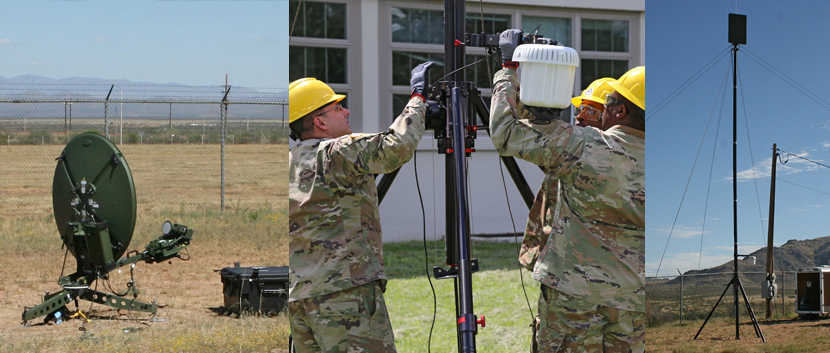
Sustainment Transport System (STS) provides secure, expeditionary, easy to use, global data transfer for the logistics community -- including logistics, personnel, medical and force protection data -- to enable the rapid delivery of the right supplies and personnel to the right locations on the battlefield. Developed for the general purpose user, these easy to deploy network transport systems will provide the resilient, high-capacity connectivity needed to enable the exchange of critical logistics information worldwide.
The U.S. Army continues to modernize the way it exchanges logistics data, both globally and locally on the battlefield. In support, in fiscal year 2023 the service established three new STS data transport programs of record (PoRs): STS Satellite Communications (SATCOM), STS Line-of-Sight, and STS Wireless-Fidelity (Wi-Fi).
The legacy logistics network program, known as the Combat Service Support (CSS) network, has been in operation since 2004. PdM UNCI continues to deliver bridge enhancements across the Army’s current fleet of logistics systems to make the CSS network more secure and capable. PdM UNCI will continue to manage CSS systems until the STS network systems are fielded across the force.
To support STS SATCOM, commercial ground satellite terminals provide the tactical network transport needed to enable global data exchange for the Army’s logistics information systems and applications, such as Enterprise Resource Planning (ERP), Global Combat Support System-Army (GCSS-Army), Integrated Personnel and Pay System-Army (IPPS-A), Medical Communication for Combat Casualty Care (MC4) and General Fund Enterprise Business Systems (GFEBS). Th new STS SATCOM systems expand current CSS SATCOM capabilities to operate on both commercial and military satellites on Ku, Ka, and X bands.
For local data exchange across battlefield logistics support locations, STS Line-of-Sight increases the range and speed of existing line-of-sight data transmission solutions, while STS Wi-Fi provides secure wireless connectivity at each of the STS network nodes. All of the easy-to-use STS expeditionary network transport systems are developed for general-purpose users and can be rapidly setup and torn down for enhanced unit maneuverability.
The modernized STS solutions also provide a more robust capability to support predictive maintenance, telehealth services, and other emerging sustainment services that support the Warfighter.
Capabilities
- Secure high-capacity global tactical network transport – SATCOM, Line-Of-Sight and Wi-Fi
- Fully capable to integrate into the Army’s unified network
- Leverages the Regional Hub Nodes and Global Agile Integrated Transport
- Commercial auto-acquire satellite terminals
- Easy to use for general purpose user
- Easy to transport for rapid deployment and battlefield mobility
- Supports Army Enterprise Resource Planning solutions